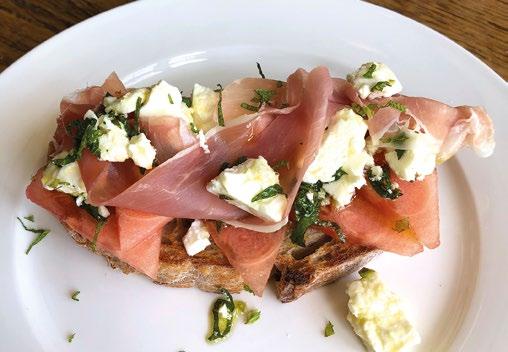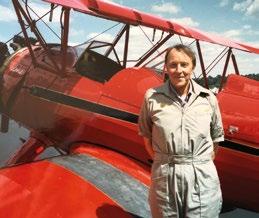
3 minute read
Bliss on Toast Prue Leith
Kitchen Garden correspondent, Simon Courtauld, stood at Covent Garden to hear Kiri sing the role of Countess Almaviva in The Marriage of Figaro.
‘In the summer of 2004, I was fishing in Iceland when – mirabile dictu – Kiri walked into the lodge where I was staying with a few friends,’ says Courtauld. ‘She and her ghillie/friend joined us for dinner, when all the talk was of fishing – of the salmon we had caught that day, the condition of the river, the prospects for tomorrow.
Advertisement
‘Clearly Kiri was an experienced fisherwoman and
Fisherman’s friend: Kiri Te Kanawa, a keen angler
she spoke enthusiastically of the trout fishing she enjoyed in New Zealand.
‘All I wanted to do was ask her to sing the Countess’s famous aria, Dove sono. But of course I never did.’ Widows are often airbrushed out of literature. But not in the new thriller by Oldie contributor Jane Thynne.
In Widowland, written under Thynne’s pseudonym, CJ Carey, widows feature prominently. They star in a horrible, dystopian, Naziruled 1950s Britain, where they are classed as Friedas – short for ‘Friedhöfefrauen – cemetery women. These were widows and spinsters over 50 who had no children, no reproductive purpose, and who did not serve a man’. The widows live in ‘Widowlands encircled with fences, designed to enforce the curfew regulations that applied to Friedas’.
Not to worry – this is a very pro-widow book. Sadly, Thynne knows her material all too well: her husband, writer Philip Kerr, author of the Bernie Gunther historical detective thrillers, died in 2018, aged only 62.
Happy 100th birthday to Captain Jack Race, who celebrated his big day on 30th May. He is the American pilot who flew the Nazi General Alfred Jodl to Rheims on 6th May 1945 to surrender the Third Reich and thus end the Second World War in Europe.
‘In 1944, Jack Race was a US Army Air Force pilot,

prue leith Bliss on Toast
Quick, easy, comforting and delicious suppers

Grilled watermelon, prosciutto and feta on wholemeal artisan loaf with mint
delivering US generals to their destinations,’ his friend Geoffrey Holland says. ‘When Eisenhower personally gave Montgomery a C-47, he promised him a pilot, too. So Jack joined the British 21st Army Group, a Pennsylvania Yankee in King George’s service.’
Captain Race flew British top brass back and forth along the front line as they advanced through France and Belgium. But his most important mission by far was flying into Germany with Montgomery’s chief of staff, Major-General ‘Freddie’ de Guingand, to collect Jodl and the German surrender delegation in Lüneburg and transport them to Rheims to sign the peace treaty.
On arrival in Lüneburg, the young pilot watched from the cockpit as De Guingand approached Jodl and the defeated general extended his hand.
‘I’m so glad that General Freddie shook his hand,’ Jack said. ‘He was extending his hand in peace.’
Jack was inspired to fly at the age of six as Charles Lindbergh flew the Atlantic solo for the first time in 1927.
After the war, Jack Race became a Pan Am jet captain. When Captain Race retired from Pan Am, he became Chief Pilot for Project Orbis on a DC-8 jet converted into a state-of-the-art ophthalmic teaching hospital. For five years, he flew Western doctors to 30 developing countries to teach sight-saving skills. He was ordained a Baptist minister in 1981.
In the photograph, Jack is in front of his red Waco open-cockpit biplane during his 1989 recreation of Lindbergh’s epic 1927 goodwill tour around America.

Jack Race in 1989 with a 1940 UPF-7 biplane, Spirit of Orbis
It was a journey of 22,350 miles, with only a map and compass for navigation, with 78 stops in 48 states.
Charles Lindbergh was 25 when he completed it. Jack Race was 68. Happy birthday!











